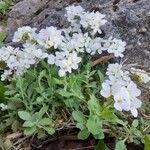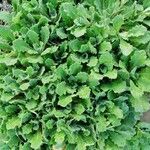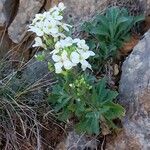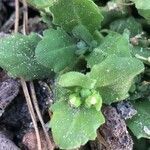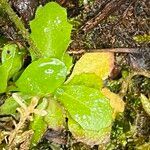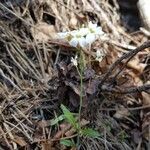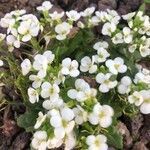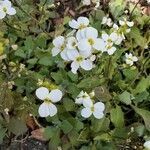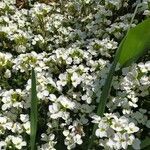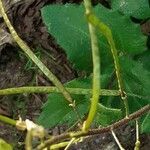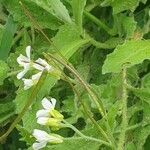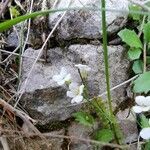Perennial herb, loosely caespitose to mat-forming, with stems extensively branched in basal parts.. Flowering stems 5–60 cm. high, ascending, basally rooting and with numerous rosettes of innovation shoots, in upper parts virtually unbranched.. Stems and leaves moderately to densely covered by stellate hairs.. Leaves spathulate to oblong, acute, denticulate, 4–71 mm. long and 2–21 mm. broad, in the innovation shoots usually attenuate and ± petioled, in flowering stems usually sessile, auriculate to clasping.. Racemes corymbose to racemose, with 10–20 flowers on 2–13 mm. long peduncles, in fruit rather dense to lax, 1–18 cm. long; pedicels ascending, 3–21 mm. long, with ascending to divaricate siliquae.. Sepals green, oblong, acute, 1.5–7.8 mm. long, the inner saccate, somewhat hairy.. Petals white to cream, spathulate to clawed, apically rounded, 2.5–18 mm. long.. Stamens 6; anthers ± 1 mm. long.. Siliqua linear, often curved and somewhat torulose, 6–55 mm. long, 1–2 mm. broad, abruptly tapered to the style, which is ± 0.5 mm. long and broad.. Seeds reddish brown, wingless or with half surrounding wings, broadly elliptic in outline, 1–1.4 mm. long and 0.7–1 mm. broad, finely reticulate.. Fig. 15.
A cabbage family herb. It is a small plant which keeps growing from year to year. It grows 10-30 cm high and spreads 20-50 cm wide. The leaves are simple. They have fine silver hairs. The flowers are downy and white.
